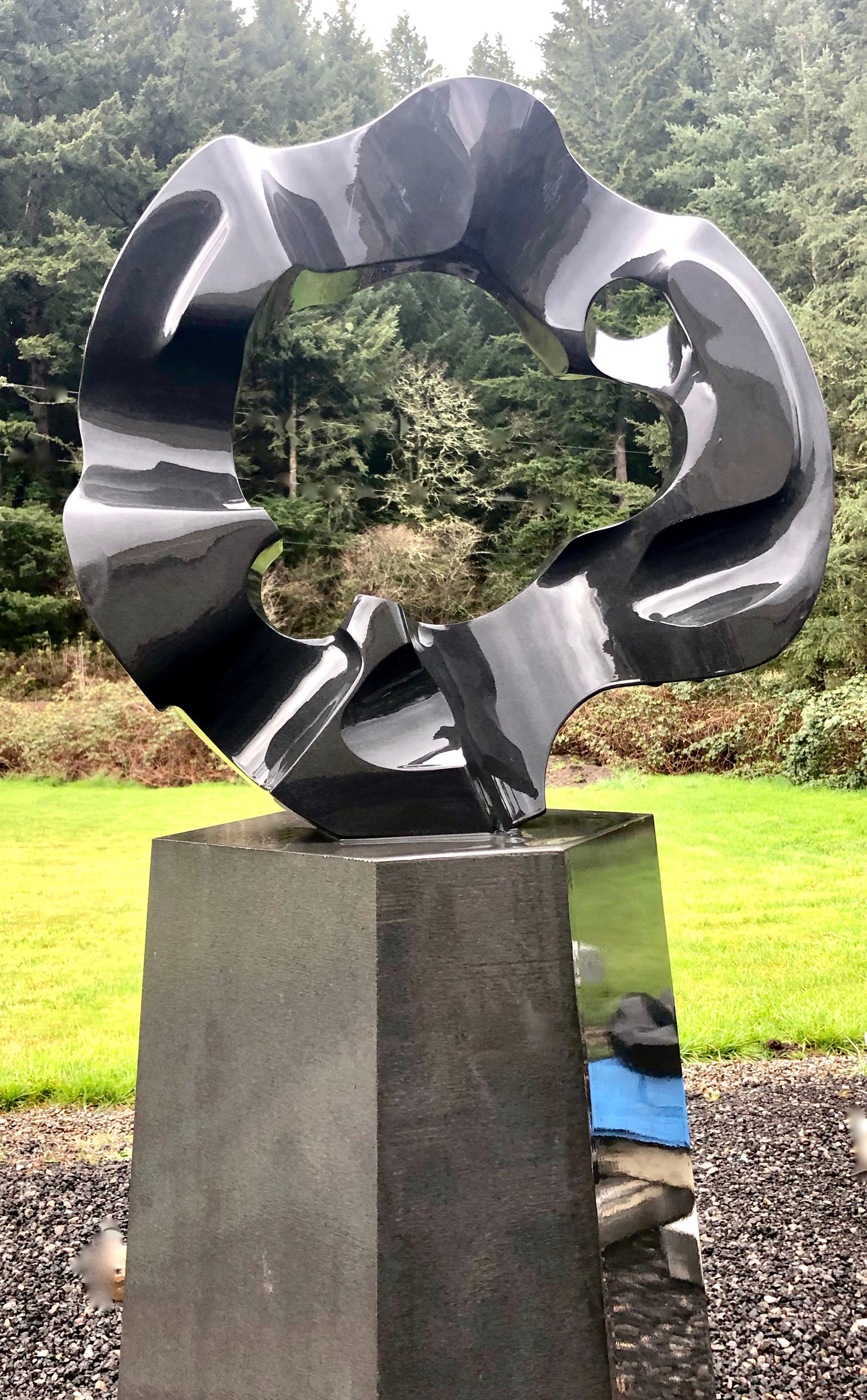
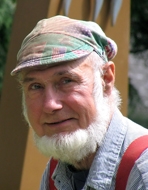
This interview was conducted by Verena Schwippert on Orcas Island at Pete’s home and studio. There is art, almost all made by him, everywhere. The house was built by Pete for his family. The yard, several acres of it, is full of many large sculptures. Some metal, some stone, some a combination of both. The creativity, amount of work and workmanship of the art was mind-boggling to the interviewer. There is also a huge studio for inside work on metal and stone, with a great number of wonderful machines. The interview took place like a relaxed chat amongst friends.
Verena: Please introduce yourself.
Pete: My name is Pete Welty, I live on Orcas Island, and I have been a welder for 42 years. I made my first sculpture when I was 6 years old, it was a bear made out of clay. I have made sculpture ever since. I carved birds out of wood as a young teenager. I have been a welder most of my life but have always dabbled in art on the side.
The overriding motivation was always the feeling to have to create; like a little extra motor that purrs on the side. Not caring about the trappings, it just needs to be greased and oiled and listened to….
Verena: Why is art important to you?
Pete: Art is important to me because it gives me a tremendous outlet and a challenge to make the things that I see in my mind. The ironic part is that once they are in my mind, they need to be done. I would say, in a sense, it’s a salvation from the humdrum of a 50 hour work week and it is a special place I can go – to insulate me from the insanity.
Verena: Why did you become an artist?
Pete: I don’t think anyone becomes an artist, they are an artist.
Verena: How has NWSSA influenced your work as an artist?
Pete: Oh, man, how could I name the ways? There are so many…camaraderie, evening debauchery at CB, wine and drink, the classes, the general support.
Looking forward to Camp B is like looking forward to Christmas when I was about 6. It’s like suddenly being in the energy flow of likeminded people, sharing frustrations, sharing problem solving.

As an artist in general in society you are an oddity, but here amongst likeminded people you fit in.
Verena: Who or what has influenced your art form?
Pete: Metal and stone are really so different. Metal plate is quite two dimensional. Stone goes more into the third dimension. There is so much out there that has influenced me: Henry Moore, Noguchi (what little I know of him) and many others.
When you are an artist you have to personify your own style, and that style can change, which, at the same time the more things you do, the more ideas you get and the more your own style develops. Point of reference comes out of you; it’s not from the intellect, but more of a flowing thing.
I find that a lot of artistry is in the mechanics and how a person uses their tools.
Look at some African art. They use few tools, but man, they get to the point, very powerful expression, inspiring to say the least.
Verena: What are you trying to express?
Pete: I am trying to express harmoniousness within the stone and me. That is the intellectual and intuitive end of it, but in reality the tools are doing the work and set the limits.
Verena: Is your art representational and/or non-representational?
Pete: Most of the things I do are more abstract. They do have titles which make it easier for the onlooker to understand what it is; they have the choice to believe the name or see it through their own eyes.
Verena: Why do you prefer to do abstract sculpture?
Pete: Because I don’t know enough to do figurative work and for now it is certainly satisfying to me. I am taking lessons from Sabah because I want to learn the figure. I want to do the human figure, to be able to express emotions in it. It appears to be a science to carve a human figure out of a block of stone; I am an infant at this figurative stuff.
Verena: How do you get your ideas?
Pete: I get my ideas from the existing form and shape of the stone. Occasionally I approach the stone with a design in my mind.
Verena: How do you develop your ideas?
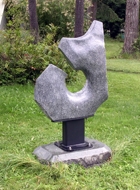
Pete: I strictly do direct carving. A lot about the question of being an artist is the question: Who am I? A direct carver, yes, but I am also into the construction of different stones together, and metal. My welding background has a lot to do with this.
Verena: Describe a recent piece or two, please.
Pete: The one I’m working on with the most passion right now I call the “Beacon. “
It is not an original idea; mine is executed in a different way than Paul’s. (Paul Lindhard of Art City showed a tower light at Camp B ’06) It is going to be a light in my yard. Construction, welding, cutting, polishing are a few of the steps I use here. Such a time consuming endeavor, a big challenge to bring all the darn parts together, there are so many. The materials are metal, basalt and onyx.
Verena: Do you work part or fulltime as an artist?
Pete: I work more than fulltime as a welder, a little time as a stone sculptor. It’s disgusting how little time I have for the stone, but I do have to run my business.
Verena: What has been your satisfaction in your life as an artist?
Pete: My greatest satisfaction is the completion of a sculpture, to have it in its finished state and have it on its base. Having it done – having done it. I say that because during the process of making a sculpture I get distracted, other stuff goes on, a lot of time lapses.
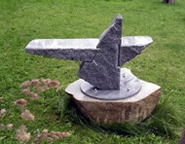
I have to run my welding business and work all the time to support that habit of mine that I have, which is stone sculpting.
Verena: What is your working process – do you do one piece at a time or have several in progress at once?
Pete: It’s a good question that will expose my disorder. I surround myself with all these potential projects. So if I turn to the left I see one and check on that one for a while. I turn right there is another one I want to do, so I work on that. An idea from a year ago comes back and I work on that.
Too many at once. I do succeed in carrying some through, like the ‘Beacon’.
Most of the time I do a lot of paying projects besides, some stone but mostly metal.
Verena: What tools do you use?
Pete: My 14” gas powered cut-off saw is very useful. And for shaping, I really like the 7” angle grinder. Also I have a large capacity core drill and I use my polishers a lot.
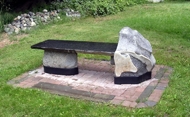
One process I really enjoy is fret cutting the hard stones, then popping off the frets with hammer and hand chisel. I love the tools, they all have a purpose.
Verena: What stones do you use?
Pete: The hard stones are my preferred medium: granite and basalt. They have beauty and charm over the marbles and their stone character seems more obvious. Also granite is readily available to me here on the island. The basalt I like because it can be so black. I would like to try some marble and softer stones in the future.
Verena: What are you looking forward to?
Pete: For one: to have more time to do art work and I have the aim of enlightening others, to go a different direction than watching TV every night and working towards the almighty dollar.
Verena: Any final words, Pete?
Pete: I just want to say thank you to all the amazing people for being there, at Camp Brotherhood, Silver Falls, Hand Carving and other get-togethers. I thank them for being who they are with their creative selves. Joining this group has redeemed me and helped me to find my way. Dave Haslett urged me initially, because I was interested in stone, to check out Camp B. What amazed me was that people there were so down to earth – and everyone dressed like me. I saw so many examples of stone art; everyone has their own style and grace and primal approaches. I am happy to be part of this group.

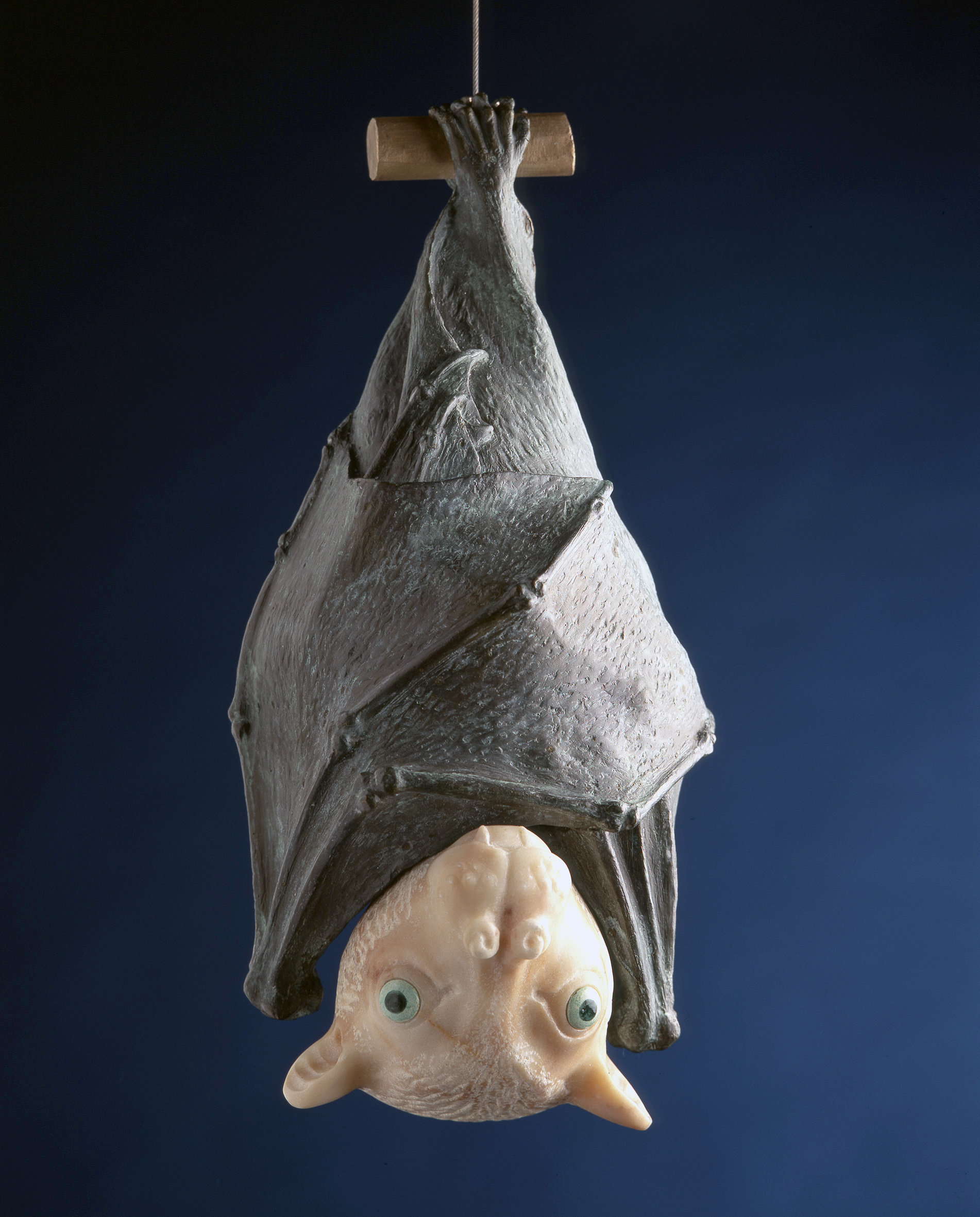
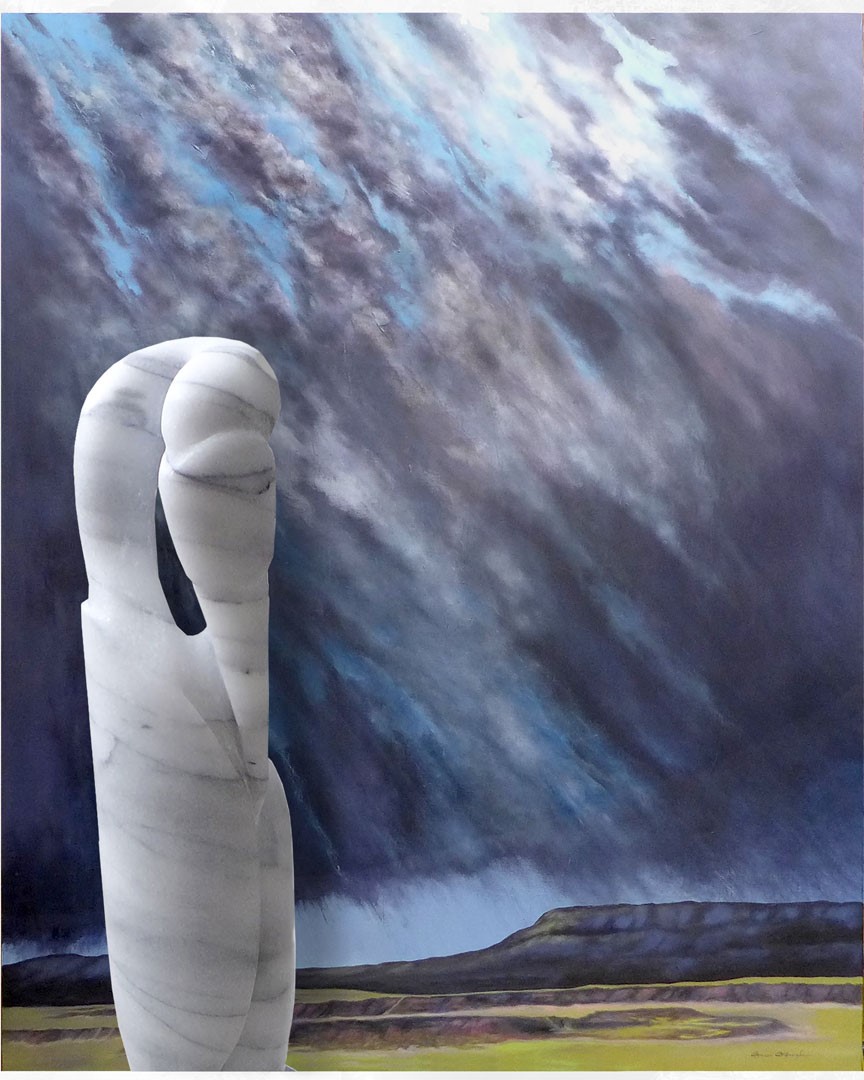


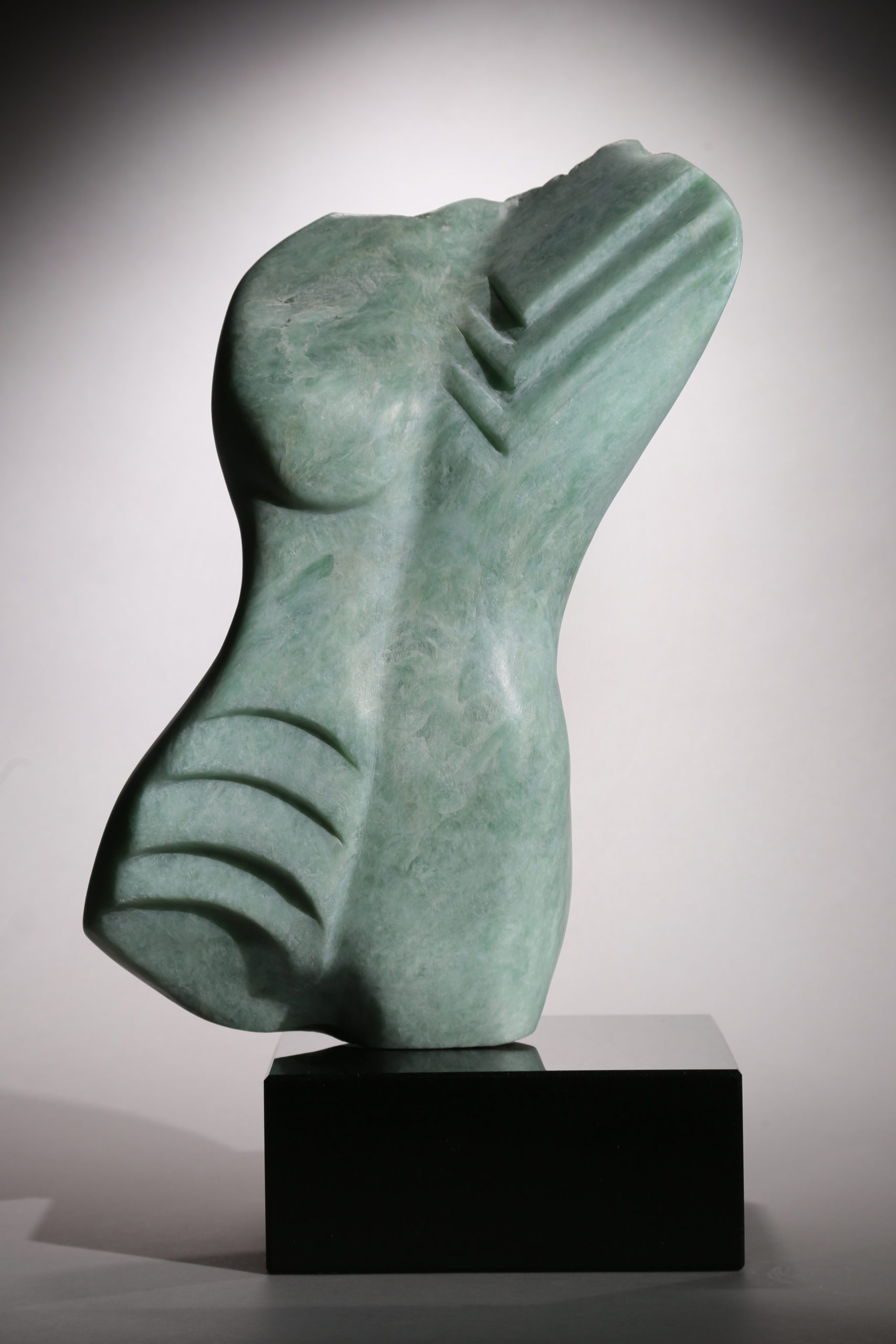
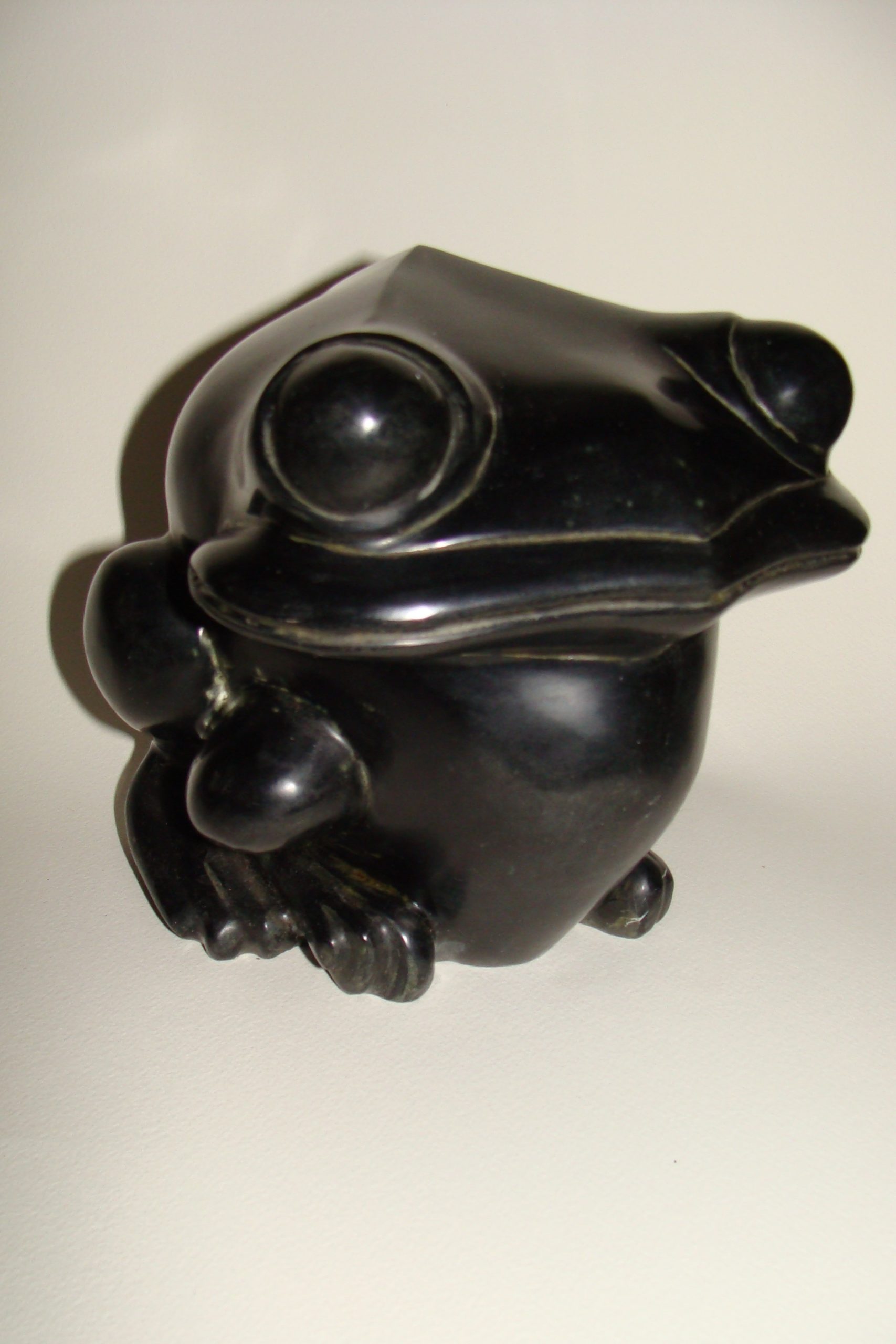




We need some kind of descriptive text here.